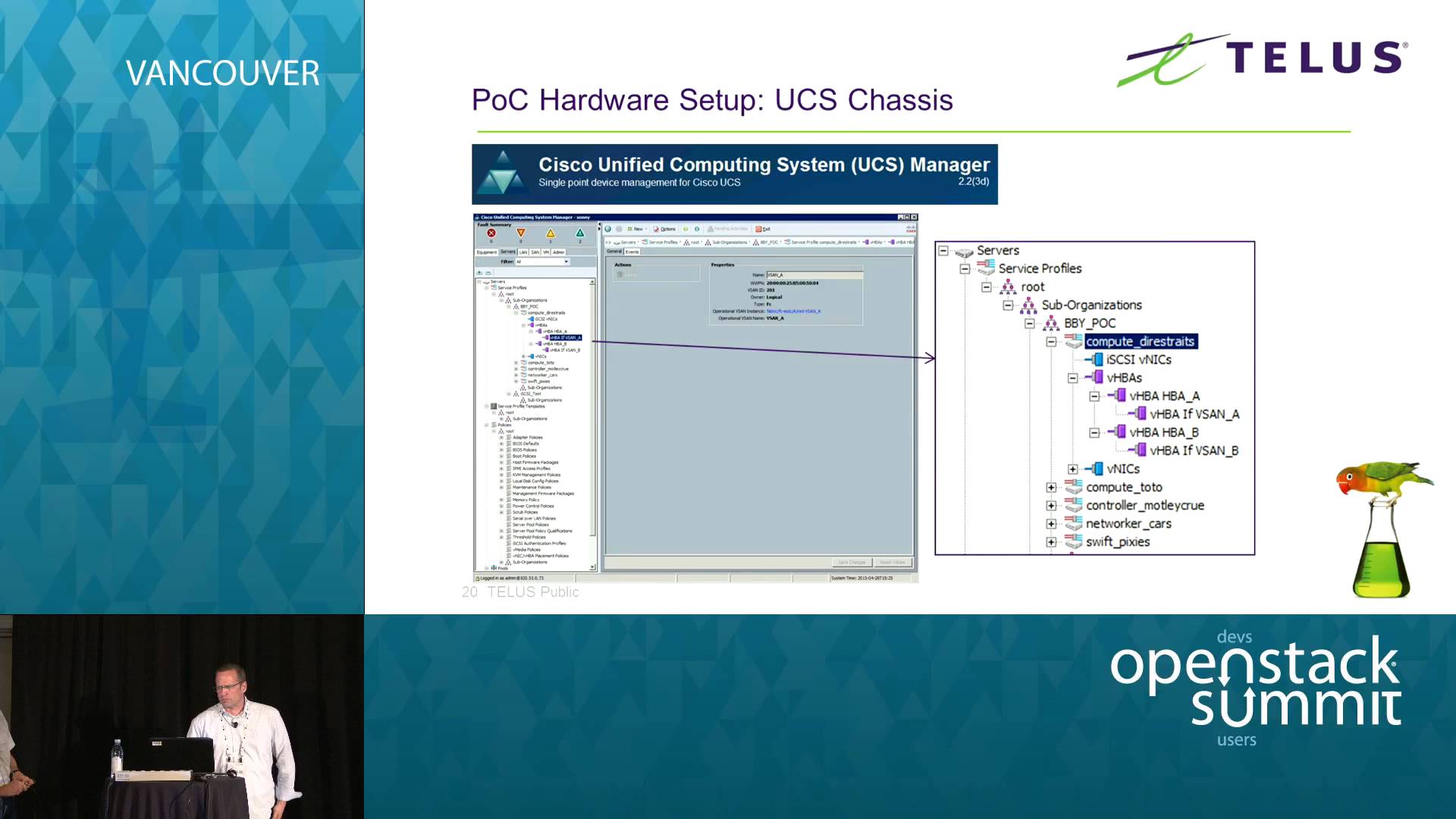Private Cloud POC with RHEL OpenStack Platform on FlexPod
Intended audience:
OpenStack Summit attendees from organizations interested in developing and deploying OpenStack based solutions internally but lacking the experience, expertise and the infrastructure to get started.
Private Cloud POC with RHEL OpenStack Platform on FlexPod
Intended audience:
OpenStack Summit attendees from organizations interested in developing and deploying OpenStack based solutions internally but lacking the experience, expertise and the infrastructure to get started.
Abstract:
The talk will share our approach and experience in the process of starting an OpenStack based project for building a private cloud and demonstrate that the barrier to entry into OpenStack based solutions is not high, the key is for the interested organizations to make the right technology selections and form the strong partnerships with their key vendors. The attendees will also be able to learn about the technical aspects of an OpenStack deployment using the RHEL OpenStack Platform on FlexPod converged infrastructure from Cisco and NetApp. This will include the logical and physical architecture and design of the solution and the lessons learned during the implementation process.
Background (Why cloud)
· Prior to the engagement we had 2 years of experience implementing OpenStack based products with focus on automated provisioning of existing IT infrastructure environments.
· The effort demonstrated that this is a viable approach and at the same time we faced multiple challenges, not so much with the product itself but with the need for integration with the existing IT management toolset:
o Complex and time consuming integration with legacy tools and processes
o IP management, CMDB, Capacity planning tools
o Requires heavy customizations and complex workflows
o Difficult to maintain due to the interdependencies between multiple tools
o Legacy infrastructure not suitable for cloud delivery – the only virtualized tier is compute
o Lack of virtualization capabilities in legacy networking, load balancing, firewall, storage infrastructure
· The automation of the current enterprise IT with OpenStack remains a high priority for us and is on-going but the primary focus is on automation of infrastructure provisioning and less on delivery of infrastructure services through programmatic interfaces.
· At the same time we started receiving requests from our internal partners where we were not asked to deliver the infrastructure directly as we traditionally would but to provide them with capabilities where they could provision it themselves programmatically.
· At that point It became clear that we needed to take it a few steps beyond automation and dive into exploration of capabilities for delivery of private cloud services.
· We identified the following high level scope and requirements:
o Infrastructure services available programmatically through APIs, CLI, portal
o Multi-tenant architecture with strong security
o Virtualized network and storage
o Cloud resources only available through APIs, portal and CLI
o No customizations for integration with the existing enterprise toolset from within the cloud
o Any required integration with enterprise IT to be done outside of the cloud
Approach
· Based on our experience with the automation effort, we realized that what we wanted to do was not possible to be done in the existing “brown filed” Enterprise IT environment, we needed to start with a clean slate and apply a “green filed” approach.
· We also wanted to do it fast, we felt we were falling behind and the industry was passing us by, urgency was required
· We had the right idea but we were missing key ingredients and namely skills, experience and funding
· It became obvious we couldn’t do this alone and needed a partnership with first class partners and leaders in the respective technologies we had to deploy
Partners and Technology Selection
Cloud Management –> OpenStack –> RHEL OpenStack Platform
Why OpenStack
· – We were already committed to OpenStack and OpenFlow for NFV/SDN
· – We already had some solid experience with OpenStack based products used for provisioning and automation
· – Open source product with strong industry backing
· – Low barrier to entry with minimal vendor lock-in
· – Multiple references for successful implementation of OpenStack based cloud services
Why Red Hat
· – Already a strong partner of ours for OS and virtualization
· – OpenStack leadership
· – Proven track record with open source
· – Strong commitment to OpenStack
– Compute infrastructure –> Cisco UCS (FlexPod)
· – Already a strong partner for compute and converged infrastructure solutions
· – Very strong product portfolio
· – Flexible, resilient and scalable architecture
· – Stateless compute nodes
· – Strong commitment to OpenStack
Storage infrastructure –> NetApp (FlexPod)
· Already a strong storage partner
· – Very strong storage product portfolio
· – Flexible, resilient and scalable architecture
· – Extremely rich and highly functional storage management toolset
· – Strong commitment to OpenStack
– We approached the three companies and after a few short meetings, we agreed to partner on a comprehensive POC for building a solution for Private Cloud.
POC Planning and execution
We went through the following steps:
· Secured the physical infrastructure for the POC through Cisco, Intel and Netapp which was shipped to us
· We cleared space in the datacenter lab and installed the gear
· Held two day workshop with RedHat, Cisco, Netapp to go over the requirements, objectives and came up with the logical architecture and design (include logical design diagrams)
· Deployed the infrastructure – Cisco, Netapp (include diagrams)
· Deployed RHEL OpenStack Platform, Cloud Forms (include diagrams)
· Within eight weeks from inception, we had fully functional and stable cloud providing the following services: (include diagrams)
o Compute
o Block Storage
o Object Storage
o Identity
o Image Service
o Networking (Neutron)
o Orchestration
o Telemetry
· Lessons learned
